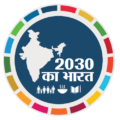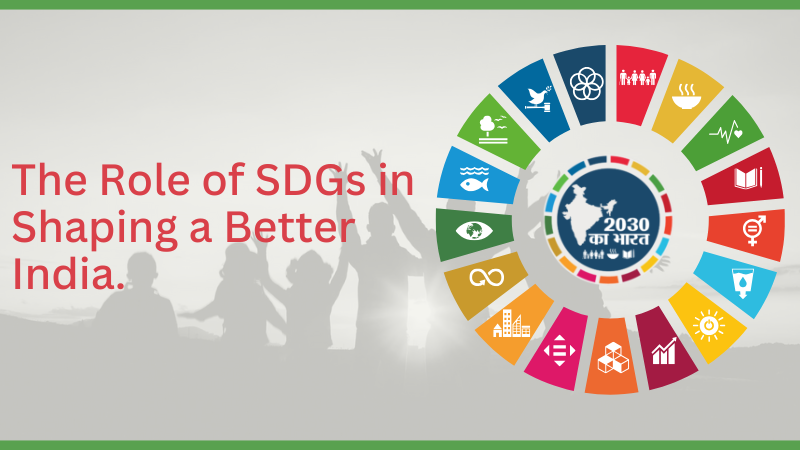Can you imagine a world where every child gets a proper education, every family has access to food and clean water, every community thrives sustainably, and every city is resilient against climate change? Sounds like a dream, isn’t it? The Sustainable Developmental Goals are not just mighty ambitions; in fact, they are a roadmap to make this vision a reality. Let’s talk about India, a country of 1.4 billion people with diverse challenges and opportunities. The SDGs undoubtedly offer an unparalleled chance to build a future that leaves no one behind.
Understanding the 2030 SDGs Agenda
Adopted in 2015, the 2030 Agenda for Sustainable Development is a universal call to action comprising 17 SDGs and 169 targets. These goals encompass social, economic, and environmental factors of development, which is a holistic approach crucial for a country like India, which faces disparities in income, access to resources, and quality of life.
Whether it is eradicating poverty or combating climate change, these goals are interconnected and interdependent. The success of one goal often catalyzes the progress of the other. But the question is where does India stand on this ambitious agenda?
India’s Progress- a mix of promises and challenges
- Eradication of poverty and hunger (SDG Goals 1 and 2)
India has made significant strides towards reducing poverty. According to the World Bank, the poverty rate has declined from 22.5% in 2011 to about 10% in 2022. Initiatives like PM Garib Kalyan Yojana and Poshan Abhiyan have helped combat hunger and malnutrition. However, in rural areas, there are still rising issues of deprivation, and urban poverty has reached high levels due to economic disbalance and the COVID-19 pandemic.
- Quality Education and Gender Equality (SDG Goals 4 and 5)
Programs like Beti Padhao and Samagra Shiksha are making education accessible to more children, especially girls. The National Education Policy 2020 promises transformative changes, but challenges persist in ensuring equitable quality education and breaking gender stereotypes in rural areas. Moreover, digital inequality exposed during the pandemic hindered learning for many children.
- Clean Energy and Climate Action (SDG Goals 7 and 13)
India’s renewable energy capacity has increased significantly over the past few years. The target is to achieve 500 GW by 2030. The International Solar Alliance, an Indian initiative is making waves globally. However, balancing industrial growth with emission control remains a tightrope walk. Extreme weather conditions linked to climate change like floods, tsunamis, or heatwaves underline the urgency of accelerating climate adaptation measures.
- Reducing inequality (SDG Goal 10)
With schemes like PM Jan Dhan Yojana which ensures financial inclusion, it won’t be wrong to say that India has taken measures to counter inequality. Still, there are several disparities in healthcare, income, and education between urban and rural areas remain significant hurdles. The rural-urban digital divide and lack of access to affordable healthcare in remote regions increase inequality.
While many hurdles are posing significant challenges in India’s path towards achieving its 2030 agenda, as a nation with the third largest economy, the country has proved many times in the past that it is unstoppable towards its goals. India’s approach to implementing the SDG goals is multipronged:
- Policy Alignment: Many flagship schemes align with SDG targets, such as Swachh Bharat Abhiyan contributing to SDG 6 (Clean Water and sanitation) and Ujjwala Yojana advancing SDG 7 (Affordable and Clean Energy). Initiatives like Ayushman Bharat have also been instrumental in improving healthcare access for SDG 3 (Good health and well-being).
- Local Centric Approach: NITI Aayog’s SDG India Index ranks states and districts, encouraging local governments to adopt tailored strategies. States like Kerala and Himachal Pradesh are in the front, while others like Bihar, and Uttar Pradesh need to accelerate their efforts.
- Public- Private Partnerships: From startups innovating for renewable energy to NGOs championing community welfare, India’s diverse stakeholders amplify efforts. Take for instance the partnerships in the healthcare sector during the Covid pandemic showcased the potential of collaborative efforts. The CSR initiatives done by the companies have also driven significant progress towards education and health.
Additionally, India’s global partnerships like G20, can leverage international expertise and resources to accelerate SDG implementation. - Technology advancements: Leveraging technology has been a game changer for the implementation of sustainable development goals. Initiatives like Digital India promote e-governance and financial inclusion, while technologies like drones and AI are being used in agriculture and disaster management to enhance efficiency and outcomes.
SDGs are not just a governmental responsibility. They are a collective mission that needs every citizen’s involvement. Business, civil society, academia, and individuals have pivotal roles to play. Achieving the SDGs in India is about reshaping the nation’s trajectory towards equity, sustainability, and resilience. India stands at a crossroads. The next few years will determine whether it emerges as a sustainable development leader or misses this unprecedented opportunity.
Just remember, every small action counts. For more information: 2030kabharat.com

